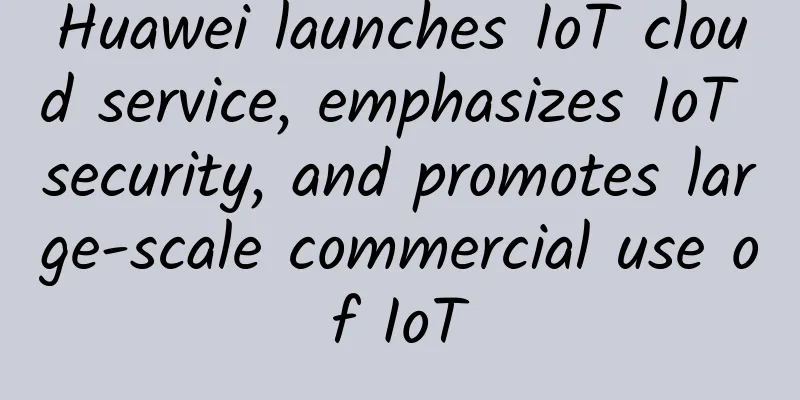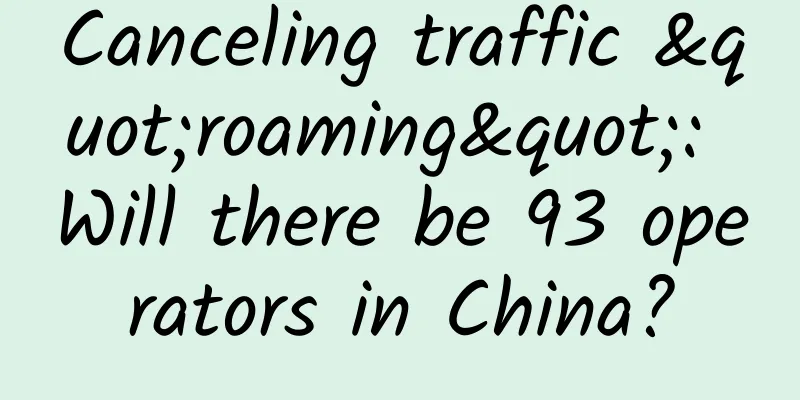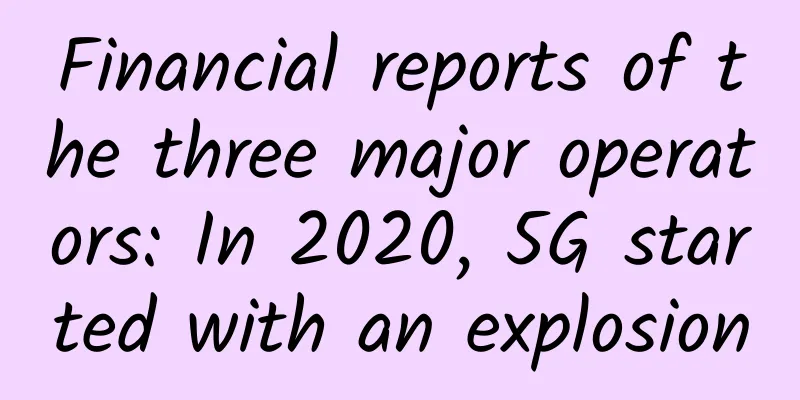Huawei launches IoT cloud service, emphasizes IoT security, and promotes large-scale commercial use of IoT

|
[51CTO.com original article] The Internet of Things is based on the computer Internet and uses technologies such as RFID and wireless data communication to build an "Internet of Things" that covers everything in the world. The Internet of Things has a wide range of uses, covering smart cities, smart transportation, smart homes, smart fire protection, environmental protection, government work, public safety, smart medical care and other fields. It can be said that the Internet of Things is the intelligence of all walks of life. The Internet of Things has been developing in China for many years. It was not until 2016 that the freezing of the narrowband Internet of Things NB-IoT standard opened up a huge market for the Internet of Things and provided a better way to develop the Internet of Things. The industry generally believes that 2017 is an important node for narrowband Internet of Things to lead the large-scale commercial use of the Internet of Things, and it is the explosive period of the Internet of Things industry and the first year of commercial use. As domestic operators focus on the vast blue ocean market of the Internet of Things and equipment manufacturers strongly promote it, the large-scale commercial use of the Internet of Things is accelerating and entering the fast lane. At the same time, the NB-IoT terminal chips released by Huawei, China Mobile and other companies have provided the basic conditions for the large-scale commercial use of NB-IoT in my country. However, in the process of large-scale commercial use, enterprises will always encounter various problems. Especially when new innovative enterprises start, there are certain barriers in terms of investment and technology. At the same time, how to better implement in China and transport mature projects from China to overseas also requires a lot of work. Therefore, to do a good job in the IoT industry, it requires the joint efforts of the industry and requires experienced and capable enterprises to share their experiences, so as to deepen and enrich the entire industry. In order to meet the development needs of the IoT industry and promote the rapid development of the entire industry, at the recently held 2017 Huawei Connect Conference, Huawei launched IoT cloud services and released an end-to-end IoT security white paper, demonstrating the latest technological and industry application achievements in the large-scale commercial use of IoT, and jointly discussed with industry professionals the problems and solutions in the large-scale commercial use of IoT.
Zhang Baoqing, Director of Weifang Smart City Construction Office (left), Jiang Wangcheng, President of Huawei IoT Solutions (center), and Wang Songtao, Director of Huawei Cloud Core Marketing Engineering Department (right) Huawei launches IoT cloud services to empower partners During the conference, Huawei's president of IoT solutions said in an interview with 51CTO that through practice and market research, Huawei believes that in order to promote the commercial use of IoT, it is necessary to focus on the IoT platform and move IoT services to the public cloud. Based on this, Huawei launched IoT cloud services to provide partners with three major capabilities: First, share the basic capabilities of global cloud services. Currently, Huawei has deployed public clouds and local data centers in more than 20 countries and regions, and provides cloud services to more than 170 countries and regions around the world. Huawei IoT cloud services can share Huawei cloud technology and global service capabilities, and can provide online and offline IoT cloud services to global customers. Second, promote the end-cloud collaboration capability. The IoT industry is very convenient to connect to the cloud. At present, Huawei's cloud-pipe-end collaboration PaaS capabilities support terminal device management throughout the entire life cycle; standardized southward opening supports rapid integration of devices across manufacturers, chips, and OS; industry middleware capabilities such as the Internet of Vehicles and public utilities promote the rapid construction of industry customer businesses, and the global and local IoT cloud ecosystem promotes large-scale commercial use. In addition, Huawei's IoT end-cloud collaboration solution can be applied to commercial networks on a large scale for the first time, further accelerating the large-scale commercialization of the Internet of Things. This solution can promote the rapid integration of terminal devices, ensure the rapid deployment of terminal devices, and ensure efficient operation and maintenance of terminal devices. Third, the ecosystem is open. Huawei LiteOS can be used for Huawei chips as well as non-Huawei chips. At the same time, in order to facilitate partners to call and integrate the open capabilities of Huawei's IoT solutions, Huawei has built OpenLabs covering the world. It has built 14 OpenLabs in Shenzhen, Xi'an, Shanghai, Tokyo, Japan, Singapore, Dusseldorf, Germany, etc., and helped global operators build 8 OpenLabs. Through OpenLab, Huawei can provide open laboratory services to partners, and work with partners to quickly develop and integrate solutions and quickly bring solutions to market. "By the end of this year, we can see that there will be more than 20 countries and more than 30 networks connected to NB-IoT around the world." Huawei's IoT cloud services are gradually being put into commercial use, accelerating industry innovation Huawei's IoT cloud service supports cloud collaboration, which enables easy integration of massive terminal devices and complete and efficient device management, such as visual terminal device management, remote firmware upgrades, and end-to-end fault location. At the same time, Huawei's IoT cloud service supports flexible and open application enabling services, and provides industry cloud service suites such as public utilities, smart homes, and Internet of Vehicles, which can accelerate industry application development and new business launches. At present, Huawei's IoT cloud service has been put into commercial use. According to Jiang Wangcheng, the IoT access of water meters and gas meters is now very mature, and NB-IoT applications have been widely recognized by partners. PSA Internet of Vehicles is based on Huawei's public cloud/private cloud unified architecture, effectively supporting global and local requirements; Weifang Smart City Cloud Platform fully utilizes the advantages of end-cloud collaboration to ensure the management of terminal equipment throughout the life cycle; iSoftStone Cloud Services has been sold to rent, helping partners to achieve business model and delivery model transformation, and providing solutions to industry customers quickly and at low cost. Zhang Baoqing, director of the Weifang Smart City Construction Office, said that the Weifang Smart City Office is the first smart city office in Shandong Province. With the help of Huawei, Weifang has built the country's first city-level smart management platform. The cooperation with Huawei originated from the advent of Huawei's NB-IoT technology. Although the Weifang IoT strategy has just been launched for less than a year, the office has made rapid progress, expanding from the initial 12 types of application projects to 16 categories. Weifang's city-level smart management platform has commercial value, and many companies have seen the major business opportunities contained in the platform. For example, many companies engaged in smart fire protection, smart water conservancy, and smart municipal administration have actively requested to connect data. "In the future, as the Internet of Things Weifang expands or becomes commercially available, at certain time points we will fully consider how to work with Huawei to commercially operate the platform." Large-scale commercial use of IoT has begun, and IoT security issues cannot be ignored According to a Gartner report, the number of IoT devices worldwide will reach 26 billion in 2020. However, due to lagging security standards and the lack of security awareness and investment by smart device manufacturers, the IoT has already laid a huge hidden danger and is the number one security threat to personal privacy, corporate information security and even national critical infrastructure. Imagine that no matter whether home or enterprise-level interconnected devices, such as traffic lights, thermostats, or medical monitoring equipment connected to the Internet, are attacked, the consequences will be terrible. Facing the security threats of the Internet of Things, Huawei proposed the "3T+1M" in-depth security defense system at this conference and released the IoT security white paper for the first time, providing effective protection for IoT security and promoting large-scale commercial use of IoT. Jiang Wangcheng said that "3T" refers to three layers of technology and "1M" refers to one layer of management. The system is mainly reflected in the fact that the terminal must have appropriate anti-attack capabilities, the network side can check and isolate malicious terminals, the platform strengthens data management and privacy protection, and at the same time, the entire network must be securely controlled and operated. Among them, the situational awareness of the entire network and the linkage of dynamic attack detection and response are particularly important. Jiang Wangcheng believes that security can be divided into two categories: one is security solutions, and the other is solution security. Huawei is committed to solution security, and Huawei wants to build a safe and healthy IoT ecosystem. "We should take the Internet of Things seriously. The Internet of Things brings benefits, but it also brings some confusion in terms of security. If these security issues are not resolved, there may be problems with the connection between things. Security is the most important point from the perspective of end-cloud collaboration. End-cloud collaboration means that all flows must be secure, which is very important." Wang Songtao, director of Huawei Cloud Core Marketing Engineering Department, also said: "We hope that our solution will have strong security when it is officially launched and applied, without the need to install security solutions." At the end of the interview, Jiang Wangcheng said: "We hope to work together with the entire industry and take advantage of the rise of IoT to deliver industrial applications to our customers in a better and healthier way." [51CTO original article, please indicate the original author and source as 51CTO.com when reprinting on partner sites] |
<<: China Economic and Trade Development Park and Huawei signed a strategic cooperation agreement
Recommend
Operators' 5G services are now available? Don't be fooled!
Some operators have already started running befor...
Network Slicing "Hot Pot Theory": Same Pot, Different Dreams
In the dog days of summer, when people are "...
Miao Wei: 5G temporary licenses will be issued this year and 5G terminals will be launched in the second half of the year
On January 10, Miao Wei, Minister of Industry and...
Patents and standards proposals complement each other to start the battle for 5G commanding heights
Thanks to the contributions of national policies,...
In-depth study of principles - TCP long connection and heartbeat keep alive
Preface Many Java programmers may only have a thr...
5G enters a critical development period: Accelerating base station coverage costs and continuous breakthroughs in applications
In 2020, my country's large-scale 5G construc...
The emergence of 6G technology: growth opportunities for modern industry
The potential of 6G technology will become appare...
Wind River Wins Two Awards at 2017 SDN/NFV World Summit
At the 2017 SDN/NFV World Summit hosted by Layer1...
The Legend of Network Protocol (III): The Glorious Family Goes East and West
TCP/IP is the most widely used network protocol f...
Seven tips to help you successfully perform a domain controller network migration
【51CTO.com Quick Translation】Introduction: Changi...
Karamay: Huawei's first cloud strategic cooperation city in the world
Karamay is a desert city that was born and prospe...
Don't rush to upgrade to 5G, this operation can make your 4G speed 10 times faster
Remember that at the beginning of this month, 5G ...
10gbiz: Silicon Valley dedicated server 20% off, starting from $24/month, optional CN2 line
10gbiz has just launched a promotion for two dedi...
Will cloud computing lead to the demise of large data centers?
I've heard this message repeatedly from publi...
Which collaboration metrics determine the business value of an application?
The criteria for evaluating the business value of...









